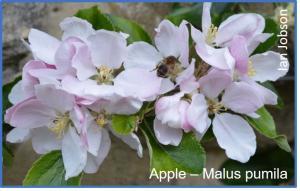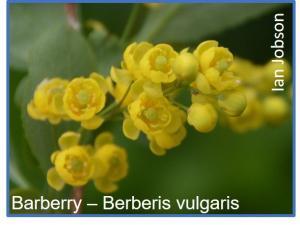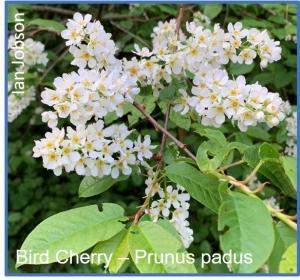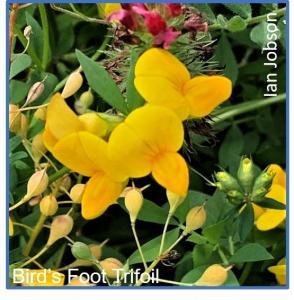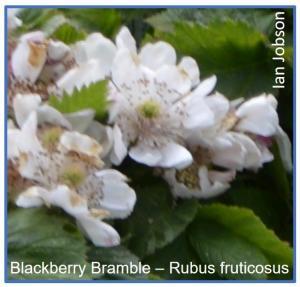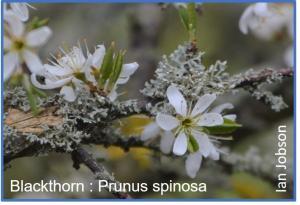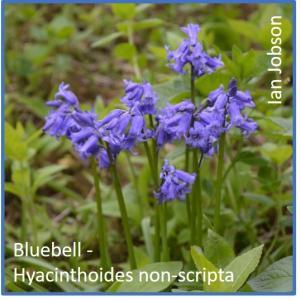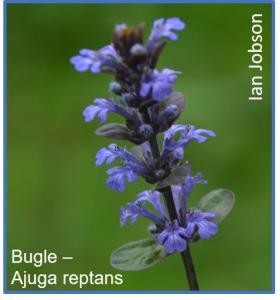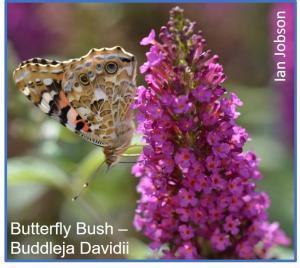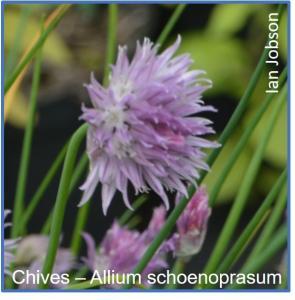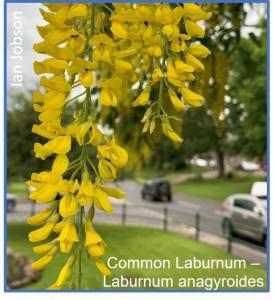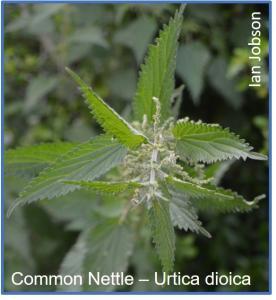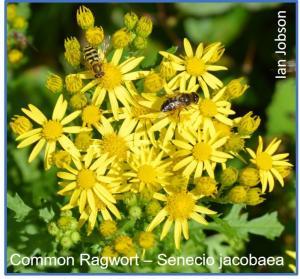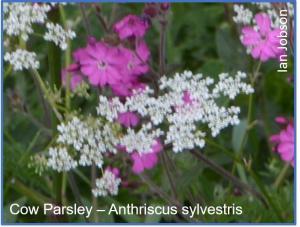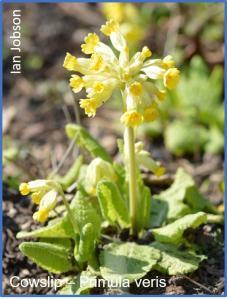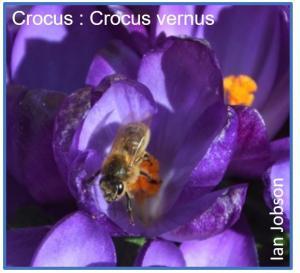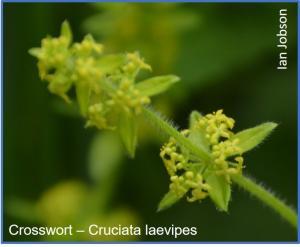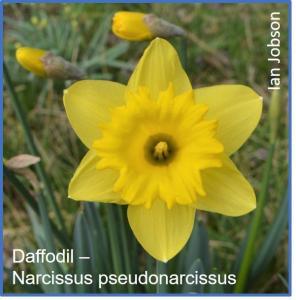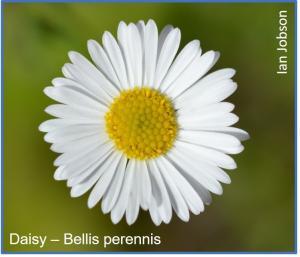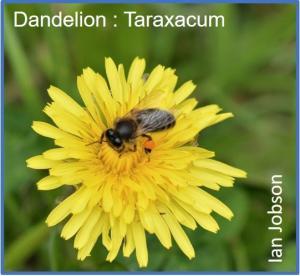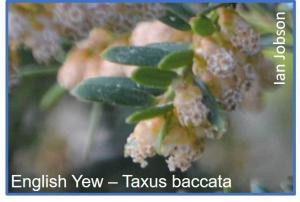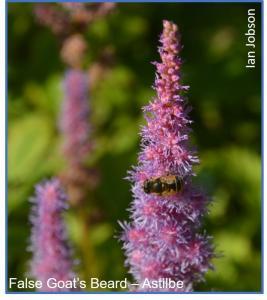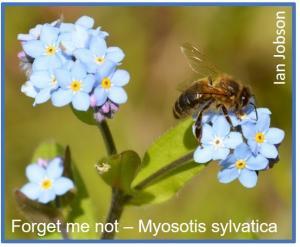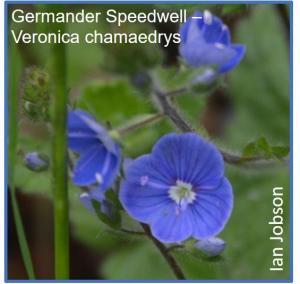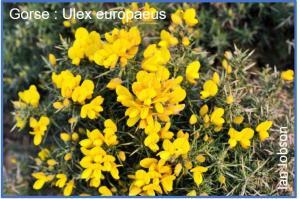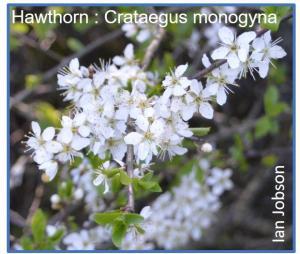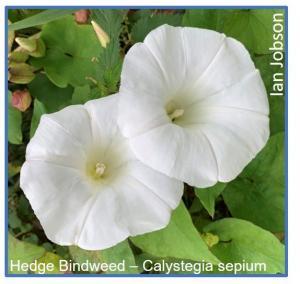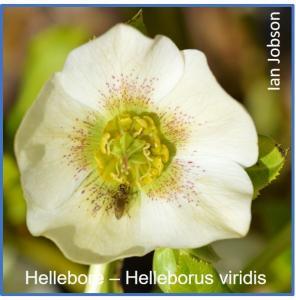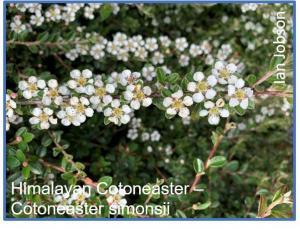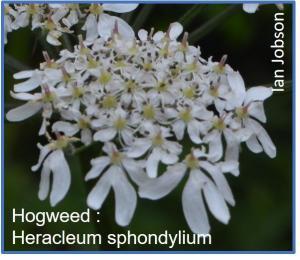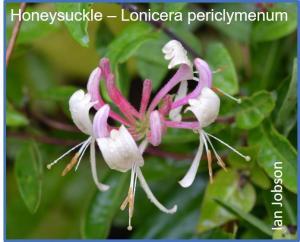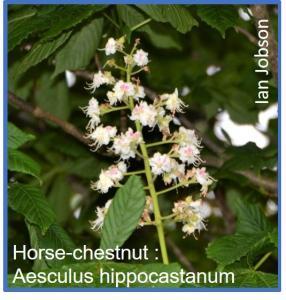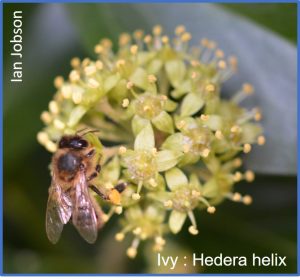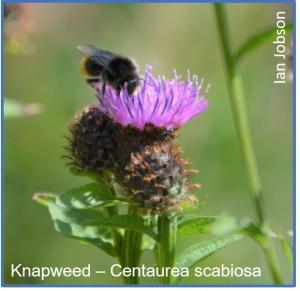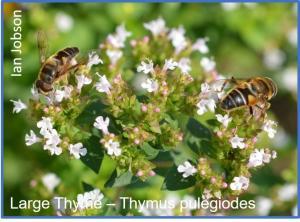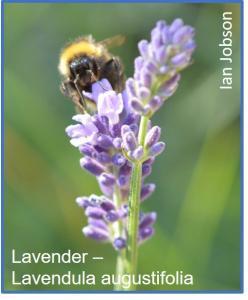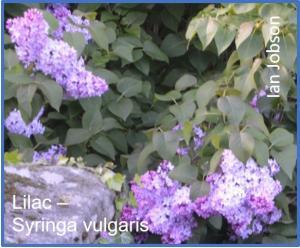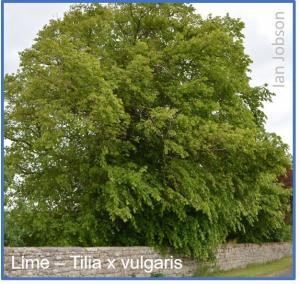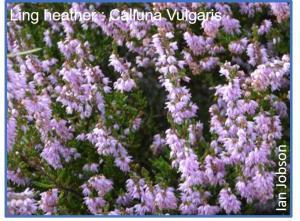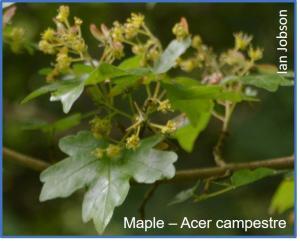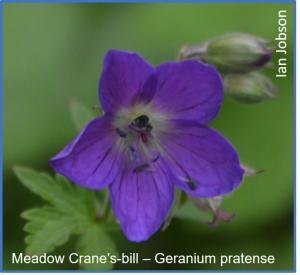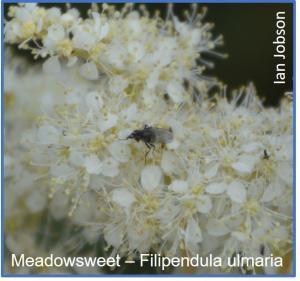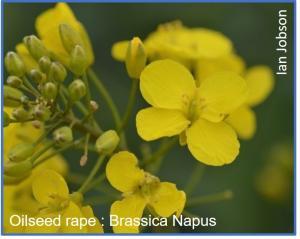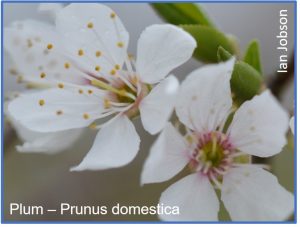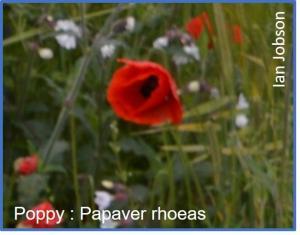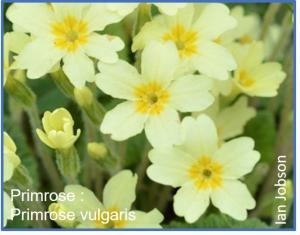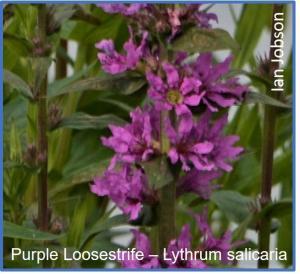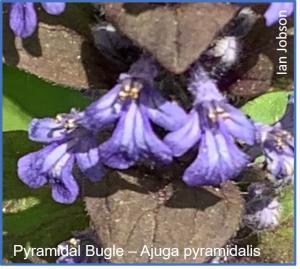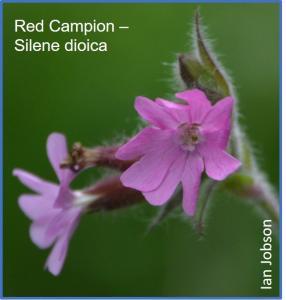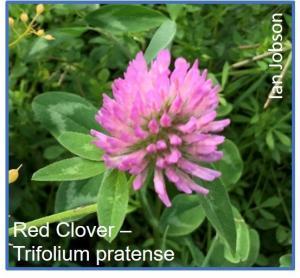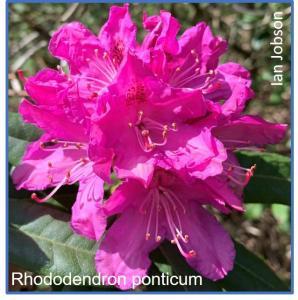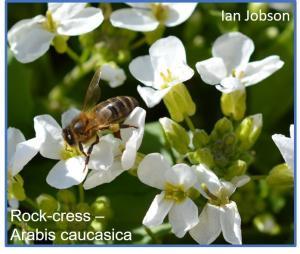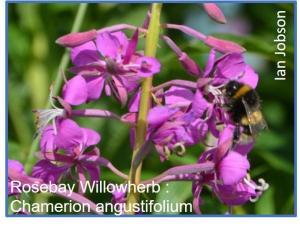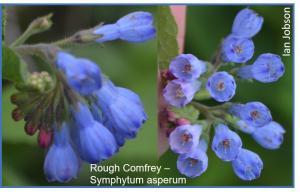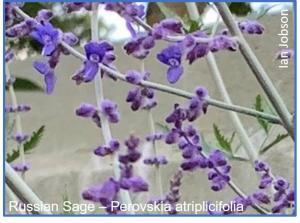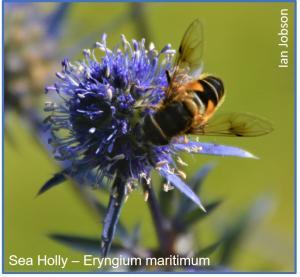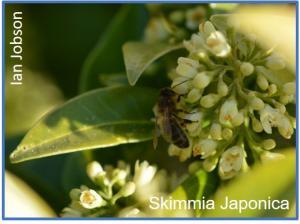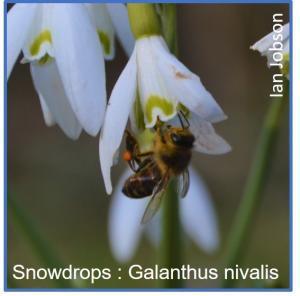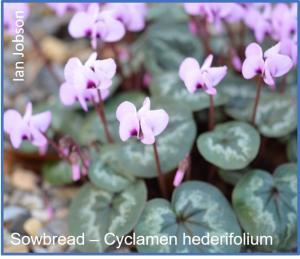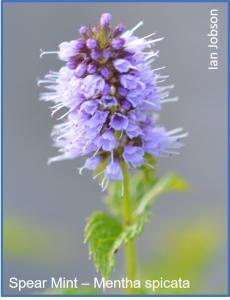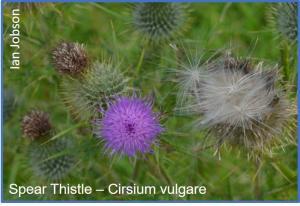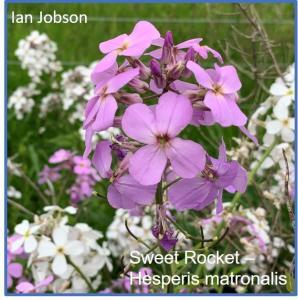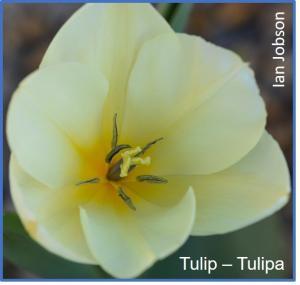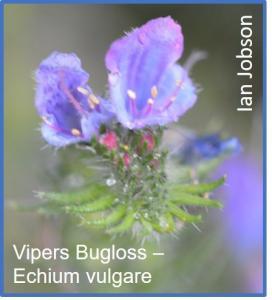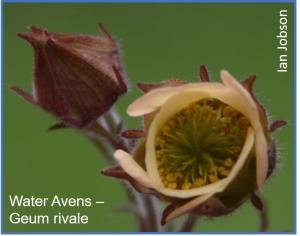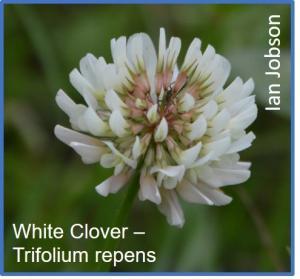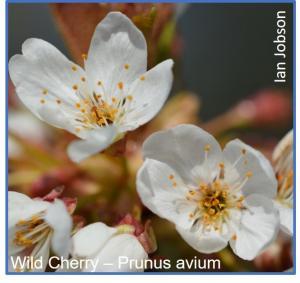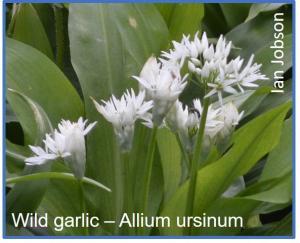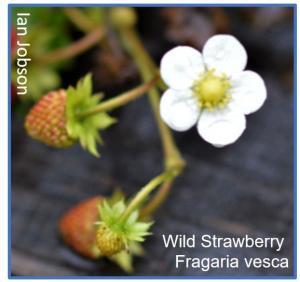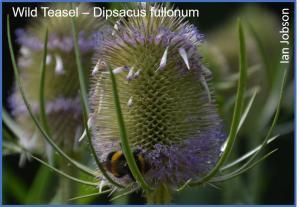Plants for Bees
Northumbrian Plants for Bees Gallery
The purpose of this gallery is to record and identify the main plants within foraging range of my honey bees. These photographs were taken in rural Northumberland in hedgerows, woodland, moorland, crop fields and gardens, when they were in flower.
They are sorted alphabetically by their common name. Click on the Filter Buttons to see what is in flower each month.
Apple
Apple – Malus pumila Plant : Domestic Apple trees are an introduced species and are commonly grown in gardens for
Barberry
Barberry – Berberis vulgaris Plant : Barberry is a large, spiky, deciduous shrub which can grow over 3 m tall.
Bird Cherry
Bird Cherry – Prunus padus Plant : Bird Cherry is native to Northumberland and prefers damp woodland areas. It is
Bird’s Foot Trifoil
Bird’s Foot Trifoil – Lotus corniculatus Plant : Bird’s Foot Trifoil is a native wildflower, which grows in meadows and
Blackberry Bramble
Blackberry Bramble – Rubus fruticosus Plant : Blackberry Bramble grows readily in hedgerow, shrub land and woodland in dense spiky
Blackthorn
Blackthorn : Prunus spinosa Plant : Blackthorn can be an important early season forage for bees. It belongs to the
Bluebell
Bluebell : Hyacinthoides non-scripta Plant : Bluebells grow in abundance in rural Northumbrian woodland, forming carpets of blue flowers, in
Bugle
Bugle – Ajuga reptans Plant : Bugle is a native wild flower and is common in woodland, hedgerows and shrub
Butterfly Bush
Butterfly Bush – Buddleja Davidii Plant : Butterfly Bush is a popular garden plant and has become naturalised across the region.
Chives
Chives – Allium schoenoprasum Plant : Chives are an uncommon native plant but are commonly grown domestically as a culinary herb.
Common Laburnum
Common Laburnum – Laburnum anagyroides Plant : All parts of the Common Laburnum is poisonous. It is not a native species
Common Nettle
Common Nettle – Urtica dioica Plant : The common nettle grows in large patches on waste ground, hedgerows, shrub-land and
Common Ragwort
Common Ragwort – Senecio jacobaea Plant : The Common Ragwort plant is toxic to livestock and humans. It is a
Cow Parsley
Cow Parsley – Anthriscus sylvestris Plant : Cow Parsley is a native wild flower that grows in abundance along hedgerows,
Cowslip
Cowslip – Primula veris Plant : Cowslips are a native species and grow in hedgerows, woodland and meadows in rural
Crocus
Crocus : Crocus vernus Plant : Crocus is a popular garden plant providing welcome colour on sunny days, from late
Crosswort
Crosswort – Cruciata laevipes Plant : Crosswort is a native wild flower and is common in hedgerow, woodland and shrub
Daffodil
Daffodil – Narcissus pseudonarcissus Plant : Daffodil is a native species and also grown in gardens and parks to create
Daisy
Daisy – Bellis perennis Plant : The humble daisy is a useful source of forage for bees throughout the season.
Dandelions
Dandelions : Taraxacum Plant : The Dandelion is hated by gardeners but should be loved by beekeepers. It can be
English Yew
English Yew – Taxus baccata Plant : English Yew is a native species, which can be found in woodland and
False Goat’s Beard
False Goat’s Beard – Astilbe Plant : False Goat’s Beard is native to Asia and Northern America but is grown locally
Forget me not
Forget me not – Myosotis sylvatica Plant : The Wood Forget Me Not plant has slender stems, with tiny blue
Germander Speedwell
Germander Speedwell – Veronica chamaedrys Plant : Germander Speedwell is native to the region and is common in hedgerow, woodland
Gorse
Gorse : Ulex europaeus Plant : Large patches of gorse can be found on moorland and hedgerow in rural Northumberland.
Hawthorn
Hawthorn : Crataegus monogyna Plant : Hawthorn is good source of early spring pollen and nectar for honey bees, although
Hedge Bindweed
Hedge Bindweed – Calystegia sepium Plant : Hedge Bindweed grows on shrub land and woodland margins, although it is particularly
Hellebore
Hellebore – Helleborus viridis Plant : Hellebore is a native plant and occurs in woodland and shrub land, although it
Himalayan Cotoneaster
Himalayan Cotoneaster – Cotoneaster simonsii Plant : Himalayan Cotoneaster is an introduced species, although it is now widespread throughout the region.
Hogweed
Hogweed : Heracleum sphondylium Plant : Hogweed is a tall, spindly plant and can be seen along hedgerows, woodland and
Honeysuckle
Honeysuckle – Lonicera periclymenum Plant : Honeysuckle is native to Northumberland and grows in woodland, hedgerows and shrub land. It
Horse-chestnut
Horse-chestnut : Aesculus hippocastanum Plant : The horse-chestnut tree is a very large deciduous tree, which produces “conkers” in the
Ivy
Ivy : Hedera helix Plant : Ivy is a woody, evergreen, climbing plan which can colonize the tallest of deciduous
Knapweed
Knapweed – Centaurea scabiosa Plant : Knapweed is a native wild flower, which grows in abundance in shrub land, hedgerows and
Large Thyme
Large Thyme – Thymus pulegiodes Plant : Thyme is often grown in herb gardens for its strongly aromatic scent. It
Lavender
Lavender – Lavendula augustifolia Plant : Although it is not a native plant, Lavender can be grown in domestic gardens in
Lilac
Lilac – Syringa vulgaris Plant : Lilac is an introduced species, which is grown in domestic gardens and parks for
Lime
Lime – Tilia x vulgaris Plant : Lime trees can grow to 45m high and a single tree can be a
Ling heather
Ling heather : Calluna Vulgaris Plant : Ling heather produces blankets of purple moorland across large areas of rural Northumberland, in
Maple
Maple – Acer campestre Plant : Maple is a native, large deciduous tree, with distinctive palmate leaves and “helicopter” seeds.
Meadow Crane’s-bill
Meadow Crane’s-bill – Geranium pratense Plant : Meadow Crane’s-bill is a native wild flower and is commonly found in hedgerow, woodland
Meadowsweet
Meadowsweet – Filipendula ulmaria Plant : Meadowsweet grows in abundance in rural Northumberland, particularly in damp areas, including hedgerows, meadows
Oilseed rape
Oilseed rape : Brassica Napus Plant : Oilseed rape has become a key feature of the beekeeping calendar and landscape in
Plum
Plum – Prunus domestica Plant : Plum trees are grown in domestic gardens for their attractive appearance and fruit, although it
Poppy
Poppy : Papaver rhoeas Plant : Poppy can occur in large numbers in agricultural field crops, particularly wheat, in rural
Primrose
Primrose : Primrose vulgaris Plant : Primrose typically grows in hedgerow banks, in woodland clearings and old grassland. It grows
Purple Loosestrife
Purple Loosestrife – Lythrum salicaria Plant : Purple Loosestrife is a non-native species, which is grown in domestics gardens for
Pyramidal Bugle
Pyramidal Bugle – Ajuga pyramidalis Plant : Pyramidal Bugle is a native wild flower, which grows locally on shrub land
Red Campion
Red Campion – Silene dioica Plant : Red Campion is a native species and very common in woodland, hedgerows and
Red Clover
Red Clover – Trifolium pratense Plant : Red Clover is native and common on grassland and verges. It produces long
Rhododendron
Rhododendron – Rhododendron ponticum Plant : Rhododendron is an introduced species, which has become well established in woodland and shrub
Rock-cress
Rock-cress – Arabis caucasica Plant : Rock-cress is an introduced species. It is often found in domestics gardens as a
Rosebay willowherb
Rosebay Willowherb : Chamerion angustifolium Plant : Rosebay Willowherb is a good source of pollen and nectar for colonies raising
Rough Comfrey
Rough Comfrey – Symphytum asperum Plant : Rough Comfrey is an introduced species, often used as a fertiliser in organic
Russian Sage
Russian Sage – Perovskia atriplicifolia Plant : Russian Sage is a non-native species but is often grown in domestic gardens
Sea Holly
Sea Holly – Eryngium maritimum Plant : Sea Holly grows in coastal areas, as well as grown in gardens locally for
Skimmia Japonica Plant
Skimmia Japonica Plant : Skimmia Japonica is a non-native species but is grown in gardens for its evergreen foliage and
Snowdrops
Snowdrops : Galanthus nivalis Plant : Snowdrops are hardy little plants and are one of the first in the year to
Sowbread
Sowbread – Cyclamen hederifolium Plant : Sowbread is an introduced species, although it is also grown in domestic gardens for decoration.
Spear Mint
Spear Mint – Mentha spicata Plant : Spear Mint is grown as an aromatic pot herb in many domestic gardens. It
Spear Thistle
Spear Thistle – Cirsium vulgare Plant : Spear Thistle is widespread in moorland, rough ground, hedgerows and shrub land. It
Sweet Rocket
Sweet Rocket – Hesperis matronalis Plant : Sweet Rocket is a member of the Brassicaceae family and is attractive to bees.
Tulip
Tulip – Tulipa Plant : Tulips are grown in domestic gardens for their colourful display in Spring, although the Wild
Vipers Bugloss
Vipers Bugloss – Echium vulgare Plant : Vipers Bugloss is native to Europe, although it is often grown in domestic gardens for
Water Avens
Water Avens – Geum rivale Plant : Water Avens is a native wild flower and common on river flood plains
White Clover
White Clover – Trifolium repens Plant : White Clover grows in abundance in meadows and pastures in rural Northumberland. It
Wild Cherry
Wild Cherry – Prunus avium Plant : The Wild Cherry tree grows to 25m and a single large tree can provide
Wild garlic
Wild garlic – Allium ursinum Plant : Wild Garlic is native and grows in the dappled shade of damp woodland.
Wild Strawberry
Wild Strawberry – Fragaria vesca Plant : Wild Strawberry grows in woodland, hedgerow and shrub land in rural Northumberland. It
Wild Teasel
Wild Teasel – Dipsacus fullonum Plant : Wild Teasel is a native species and grows in shrub lands, hedgerows and
Click here to also see our Pollen Microscope Slide Gallery.
If you have found this page useful, please like and share on facebook. If you would like to receive new posts in future, please register your email in the registration box on the home page.
Acknowledgements
- Stanton Hall – Gardens and Nursery, is nearby and provided some great advice, as well as some very useful reference samples.
- A key reference which was helpful in identifying these plants was the “Collin’s Wild Flower Guide” by Streeter, Hart-Davis, Hardcastle, Cole & Harper.

